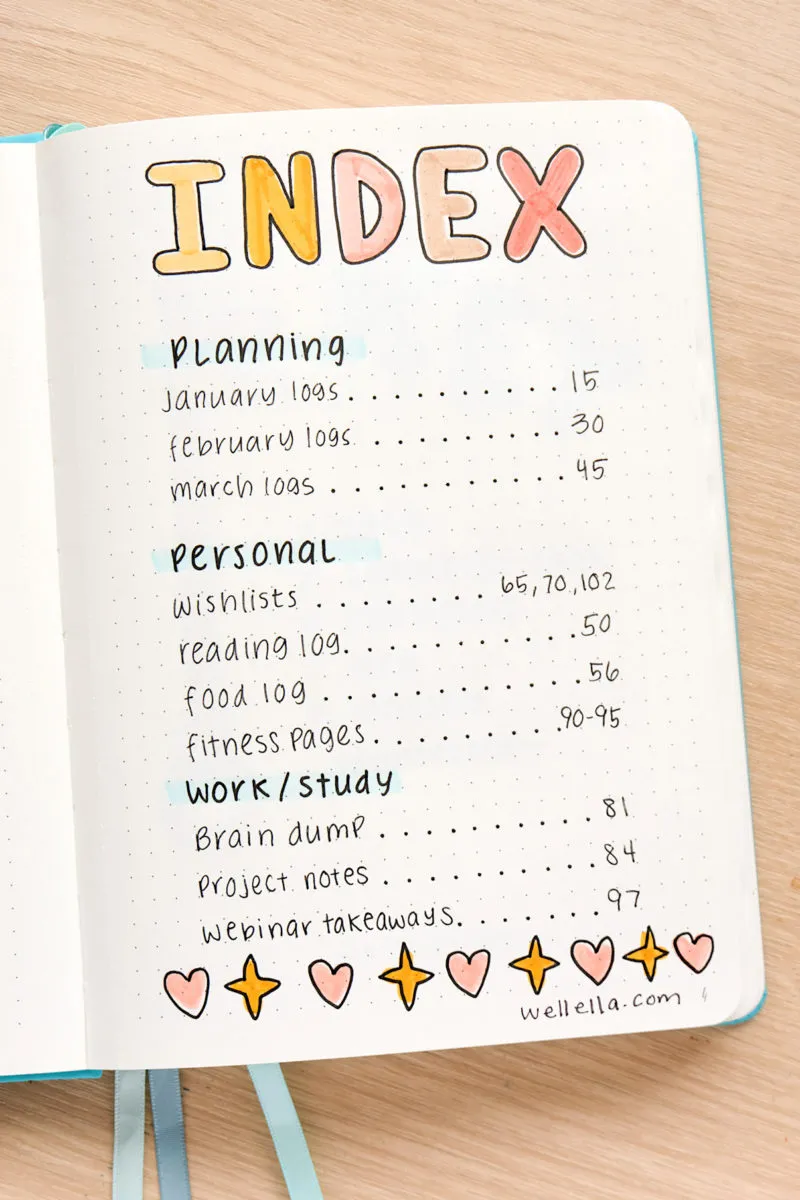The bullet journal is a powerful organizational tool that has helped millions of people stay on track and achieve their goals. At the heart of the bullet journal method is the index, a table of contents that allows you to quickly find information in your journal. In this post, we’ll explore everything you need to know about the bullet journal index and how to use it effectively.
New to Bullet Journaling? This article is part of a series on how to start a bullet journal.
What is the Index in a Bullet Journal?
The index is a key component of the bullet journal method. It is a table of contents that allows you to quickly find information in your journal. As you add new pages to your journal, you simply update the index with the page number and the topic of the page.
How to Create an Index
Creating an index in your bullet journal is easy. Simply set aside a few pages at the beginning of your journal for the index. Start by labeling the first page “Index” or “Table of Contents.” As you create new pages in your journal, add them to the index by recording the page number and a brief description of the page’s contents. For example:
- Page 3: Daily log for January 1st
- Page 4: Collection – Books to Read
- Page 7: Monthly log for February
- Page 10: Collection – Meal Planning
Continue adding pages to the index as you create them. Over time, your index will become a valuable reference guide that allows you to quickly find the information you need.
Tips for Using the Index Effectively
Here are some tips for using the index effectively:
1. Be specific
When adding pages to your index, be as specific as possible. Instead of simply writing “Weekly Log,” include the dates of the week and any important events or tasks that were included in that log.
2. Use shorthand
To save space in your index, consider using shorthand or abbreviations. For example, instead of writing “Goals for the Month of March,” you could simply write “March Goals.”
3. Update regularly
Make sure to update your index regularly as you create new pages in your journal. This will ensure that your index remains accurate and up-to-date.
4. Use color coding
Consider using color coding to help you quickly find different types of pages in your index. For example, you could use a different color for your daily logs, monthly logs, and collections.
5. Use symbols
You can also use symbols in your index to help you quickly identify different types of pages. For example, you could use a star to indicate important pages or an exclamation point to indicate pages that require action.
Benefits of Using an Index in Your Bullet Journal
Using an index in your bullet journal has several benefits:
1. Easy organization
The index makes it easy to organize your bullet journal and find the information you need quickly. You can easily flip to the right page without having to flip through pages and pages of your journal.
2. Time-saving
By having an index, you can save time by quickly finding the information you need. This is especially useful if you’re short on time and need to find something quickly.
3. Customization
An index allows you to customize your bullet journal to your needs. You can easily add new pages and update the index as you go, making it a flexible system that adapts to your life.
Conclusion
The bullet journal index is a valuable tool for staying organized and focused. By keeping an index in your bullet journal, you can easily find the information you need, save time, and customize your journal to your needs. Use the tips above to create an effective

